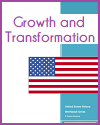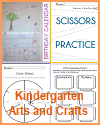| Large White Arrow PDF Printable |
|---|
| www.studenthandouts.com ↣ Classroom Organization ↣ Classroom Signs |
 |
    |
|
Large White Arrow Pointing Downward to the Right—printable sign for classroom use. Click here to print.
Educators can help point students in the right direction by providing guidance, support, and encouragement. Effective guidance not only helps students achieve academic success but also empowers them to make informed decisions and navigate the challenges of life. Here are some strategies educators can use to steer students in the right direction. Set Clear Expectations: Communicate clear academic and behavioral expectations from the beginning of the school year or course. When students know what is expected of them, they are more likely to stay on track. Establish Goals: Encourage students to set both short-term and long-term goals. Help them break down their goals into manageable steps, creating a roadmap for success. Individualized Support: Recognize that each student is unique and may have different needs, strengths, and challenges. Offer personalized support and resources to address individual learning styles and abilities. Foster a Growth Mindset: Promote a growth mindset by emphasizing the importance of effort and resilience. Teach students that intelligence and abilities can be developed through hard work and perseverance. Provide Resources: Ensure students are aware of available academic resources, such as tutoring, study groups, and library materials. Encourage them to seek help when needed. Encourage Self-Advocacy: Teach students how to advocate for themselves by asking questions, seeking clarification, and expressing their needs to teachers and peers. This skill is valuable for both academic and personal development. Mentorship: Establish mentorship programs or encourage peer mentoring where older students guide and support younger ones. Mentorship relationships can provide valuable guidance and role models. Career Exploration: Offer opportunities for career exploration and expose students to a variety of professions and fields of study. Career guidance can help students make informed choices about their future. Effective Communication: Maintain open and effective communication with students. Listen to their concerns, provide constructive feedback, and offer encouragement. Teach Decision-Making Skills: Include lessons on decision-making and problem-solving in the curriculum. Discuss the consequences of choices and encourage critical thinking. Counseling Services: Connect students with school counselors or mental health professionals who can provide guidance on academic, personal, and emotional issues. Celebrate Achievements: Acknowledge and celebrate students' accomplishments, both big and small. Positive reinforcement boosts their confidence and motivation. Create a Supportive Environment: Foster a classroom or school culture where students feel safe, respected, and supported. An inclusive and positive environment encourages students to take initiative. Encourage Reflection: Promote self-reflection by asking students to evaluate their progress, set new goals, and identify areas for improvement. Parent-Teacher Collaboration: Maintain open communication with parents or guardians. Collaborate with them to provide comprehensive support for students' development and learning. Experiential Learning: Incorporate hands-on and experiential learning opportunities into the curriculum. Real-world experiences help students connect classroom learning to practical applications. Model Lifelong Learning: Demonstrate a commitment to lifelong learning by sharing your own experiences of acquiring new skills and knowledge. Serve as a role model for intellectual curiosity. Cultural Sensitivity: Be culturally sensitive and aware of students' backgrounds and experiences. Respect and celebrate diversity in the classroom. Encourage Exploration: Encourage students to explore various interests, hobbies, and extracurricular activities. These experiences can help them discover their passions and talents. Stay Informed: Keep up with educational trends, research, and best practices to provide the most up-to-date guidance and support to students. By implementing these strategies and fostering a supportive learning environment, educators can effectively point students in the right direction, helping them navigate their educational journey and prepare for success in both school and life. |
| www.studenthandouts.com ↣ Classroom Organization ↣ Classroom Signs |








